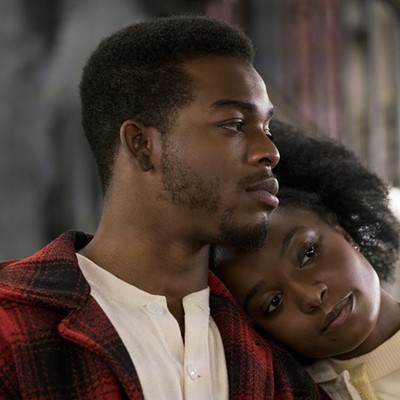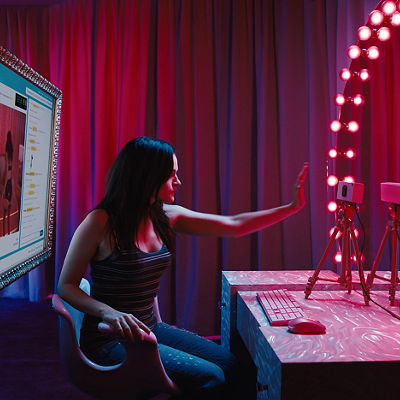8. Melissa Joan Hart had a stage mom.
At least three people affiliated with Clarissa Explains It All describe Hart's mother as a difficult figure. Clarissa creator Mitchell Kriegman even attributes Hart's posing for Maxim as part of her marketing campaign for Drive Me Crazy as "just her mom trying to change her profile." That Hart was cast as Clarissa in the first place speaks to her talent and charm, since Nickelodeon employed a screening system during the audition process to weed out any child actors with troublemaking parents.
7. Nickelodeon was an incubator for behind-the-scenes talent.
Sure, the network never produced enduring stars the way the Mickey Mouse Club did with Justin Timberlake or Ryan Gosling. But Suzanne Collins, the author of The Hunger Games, is a veteran of the Clarissa writing staff, while Janie Bryant, Mad Men's revered costume designer, got her start dressing Pete and Pete. Justified creator Graham Yost got his first taste of cowboy country as the showrunner for Hey Dude. Yost was known around the set for his bizarre practical jokes: "Whenever we did any dining scene in Hey Dude, there'd be a thing of lard on the middle of the table. Just for giggles," remembers one cast member.
6. Pete & Pete alumni take credit for creating hipsters.
"Pete & Pete was a really low-budget show--we had to wear a lot of our own clothes," recalls Alison Fanelli, who played Big Pete's best friend, Ellen. "You couldn't wear anything too trendy--a lot of denim and white shirts and things that were really run-of-the-mill. . . . We didn't even start wearing makeup until three or four years into the show." Whether it's just the cyclical nature of fashion or costume designer Janie Bryant's "accents of vintage pieces," the clothes on the show now seem like they had a special stylishness, a "Wes Anderson aesthetic" to them. "I live in Silver Lake and it's true," Bryant says. "All hipsters look like characters from Pete & Pete!"
5. The green slime was seriously gross.
Nicknamed "Gak"--after the street name for heroin, infers Marc Summers--Nickelodeon's hate-gift to parentkind was an ever-changing mixture of gelatin, food coloring, oatmeal, baby shampoo, cottage cheese, applesauce, milk powder, vegetable oil, and liquid latex. A writer on You Can't Do That describes the texture as "taking a bath in mud," while one slimee remembers it tasting "like nothing, like Cream of Wheat without sugar." Kids in the audience loved the slime, but many adults weren't fans. Laybourne recalls, "We did get negative reports from George Gerbner's ‘violence on television' studies. He would give us a violence rating for slime that would count the same as a decapitation."
4. The child performers were paid peanuts.
Many of the You Can't-ers stopped complaining about getting slimed after the network started throwing green at the green: The ones to get gooped got an extra $25 or $50 for their ordeal. Those few dollars must have been worth it, since they got paid a measly $260 per week otherwise, according to Christine "Moose" McGlade. Tim Lagasse, an artist and puppeteer who worked on a number of Nick shows, lays down the truth: "Nickelodeon likes young people who don't have much experience, because they're cheap."
3. Doo-wop was instrumental to the network's early branding efforts.
The scat-heavy stylings of doo-wop were used in both the "Nick-nick-nick-nick-nick-nick-nick-nick, NICKELODEON!" jingle and the Clarissa Explains It All theme song. Given his grandiose explanation of Nick's musical signature, network exec Fred Seibert apparently thought the music on his network had to be more than catchy: "We grew up in the age of civil rights, thinking that black music was exotic but that it was more authentic than the other music that was around at the time. And we really believed in our hearts--even though we used it as a sales pitch--that educating America's youth with the sounds of black music was good for American culture."





